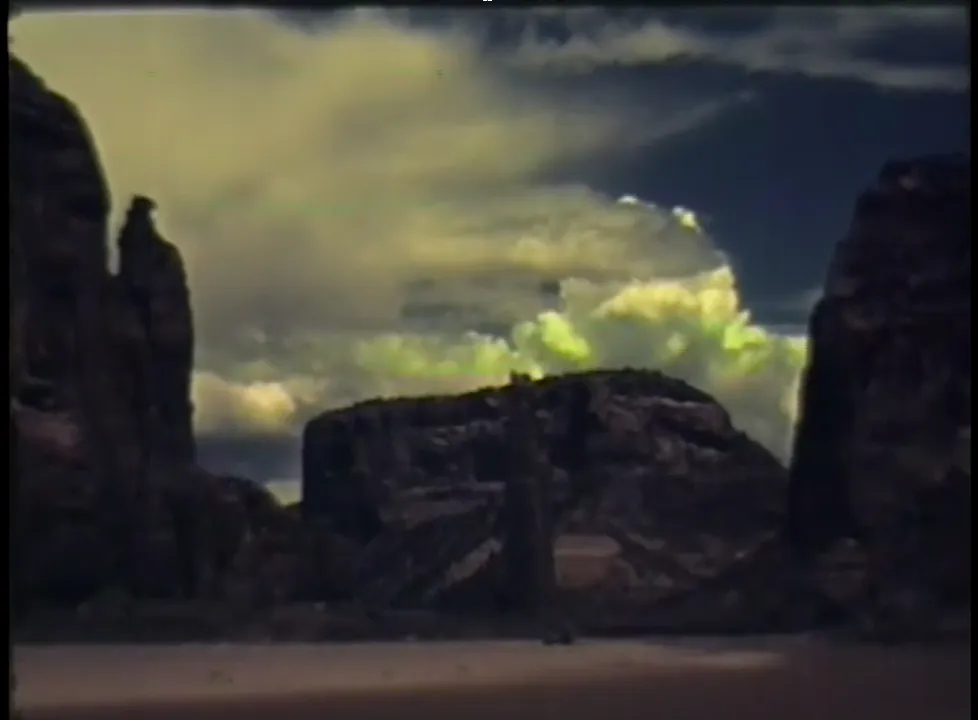Fritz on Fridays: The ‘Secret’ Films in the American Heritage Center Collection
There is an entire collection of Fritz Lang-helmed moving pictures fully unadulterated by cinephiles, scholars, historians, programmers and critics. The entire collection is available for free on the internet, too.

On the first Friday of every month, this column by critic Joshua Polanski will feature a short review or essay on a film directed by Fritz Lang (1890-1976), the great Austrian “Master of Darkness.” Occasionally (but not too occasionally), Fritz on Fridays will also feature interviews and conversations with relevant critics, scholars and filmmakers about Lang’s influence and filmography.
Fritz Lang is one of the most acclaimed filmmakers in history. Several of Lang’s films have legitimate claims to be among the greatest ever made. M and Metropolis represent the director in the latest Sight and Sound critics poll of the top 250 films ever made, the closest thing to a comprehensive survey of critical taste. No film student in the world can graduate without knowing the name Fritz Lang. And yet more than 30 of his films have gone almost completely unremarked upon beyond a very selective handful of paragraphs mentioned in his biographies and academic studies.
You read that right. There is an entire collection of Fritz Lang-helmed moving pictures fully unadulterated by cinephiles, scholars, historians, programmers and critics. The entire collection is available for free on the internet, too.
Lang’s third and final wife, Lily Latté, gifted the University of Wyoming’s American Heritage Center a collection of Lang’s writings known as the “Fritz Lang Papers” over a series of three shipments in 1976. The center confirmed to me in a private correspondence that Latté’s donation came in response to an inquiry about Lang’s materials following his passing from the Center’s then director. In addition to the papers, the collection contains silent non-fiction and non-narrative short films on 16mm that the director shot between 1938 and 1953. The titles were all on canisters at the time of the donation, the Center confirmed in their email to me. Most likely, these would come from Lang since they are all places and dates, as if he were inscribing his memories onto film.
Most of the titles relate to his travels in the Southwest United States from the 1930s to 1950s. One video, just under 10 minutes in length, features a more urban New Orleans; another records the Canadian Rockies. The longest film comes in just 40 minutes, but many are closer to a one- to two-minute runtime than they are to double digits. Of Lang’s time in the Southwest, film historian Phil Wagner (one of few scholars to engage with the home videos in any way) discerns that Lang’s self-tour of the region filled his time in the interim of shooting Fury in 1936 and The Return of Frank James, his first Western, in 1940. (Beyond Wagner, there is also an American studies master’s thesis that makes use of the entire collection, but the shoddy scholarship adds little to American studies and even less to film studies.) Wagner also fact-checks yet another exaggeration by Lang. “Lang often reflects on the ‘six months he lived for his own pleasure with the [Navajo] in Arizona’ … before shooting The Return of Frank James, but the Kodak records for 1938–1939 indicate that he spent only about two weeks in the summer of 1938 with Navajo.”
Continue reading at the Midwest Film Journal.